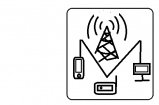Windbg Minidump Tutorial – Setting Up & Reading Minidump Files
This is a tutorial on how to set up and read your minidump files when you receive a BSOD (blue screen of death) in the attempts to gain further insight as to the cause of the problem. First thing is first. Download the latest debugging tools from the Microsoft site.
Then go to Start / Start Search. Type i
the command cmd .
Then change directories to:
C: Program FilesDebugging Tools for Windows (x86)
by using the command:
cd c: program filesdebugging tools for windows (x86)
It's case insensitive when using the cd command.
Then type in:
windbg.exe zc: windowsminidumpmini06190901.dmp c "! analyze v"
Your minidump file is located at C: WindowsMinidumpMini06200901.dmp. It'll be in the form "MiniMMDDYY01.dmp".
KERNEL SYMBOLS ARE WRONG. PLEASE FIX SYMBOLS TO DO ANALYSIS
If somewhere in the output of the Bugcheck Analysis you see an error like:
Kernel symbols are WRONG. Please fix symbols to do analysis.
Then it's most likely that you are using previous and incompatible symbols or corrupt files or you don't have the proper symbols at the specified location when the Windbg program was trying to analyze the minidump file. So what I did was open up the Windbg program located at C: Program FilesDebugging Tools for Windows (x86) (in Vista and I believe it's the same location for XP).
SETTING THE SYMBOL FILE PATH VIA WINDBG COMMAND LINE:
This is an important step so ensure that your symbol path file is set correctly lest you get the kernel symbols are WRONG error or other types of errors. Now set the Symbol File Path (File / Symbol File Path) to:
SRVe: symbols [path to microsoft symbols path]
However, for some reason I found that in order to set the Symbol File Path in the "File / Symbol File Path" field you cannot change it directly with the field of "File / Symbol File Path". So what I found that you need to change it through the Windbg command window by going to:
"View / Command"
In the bottom of the command window beside the "kd>" prompt type this in:
.sympath SRVe: symbols [path to microsoft symbols path].
The part between the two asterisks () is where the symbols from Microsoft's servers will be downloaded to. It's fairly large (approximately 22MB) so make sure that you have sufficient disk space.
SETTING SYMBOL FILE PATH IN THE ENVIRONMENT VARIABLE:
Alternatively, you can set it in your environment variable either in your system or user environment variable. To do this, click the WINDOWS KEY + e. The WINDOWS KEY is the key to the right of the LEFT CTRL key of the keyboard. This will open up Windows Explorer.
Then click on the "Advanced system settings" at the top left of the window. This step applies to Vista only. For XP users, simply click on the Advanced tab.
Then click on the button "Environment variable" at the bottom of the window.
Then click on the "New" button under System Variables. Again you can create the environment as a user environment variable instead.
In the "Variable Name" type:
_NT_SYMBOL_PATH
In the "Variable Value" type:
symsrvsymsrv.dlle: symbols [path to microsoft symbols path]
If you set the symbol file path as a system environment variable I believe you may have to reboot your computer in order for it to take effect.
OUTPUT OF WINDBG COMMAND
So the following is the output for my crash:
Microsoft (R) Windows Debugger Version 6.11.0001.404 X86
Copyright (c) Microsoft Corporation. All rights reserved.
Loading Dump File [c: windowsminidumpmini06260901.dmp]
Mini Kernel Dump File: Only registers and stack trace are available
Symbol search path is: SRVe: symbols [path to microsoft symbols]
Executable search path is:
Windows Server 2008 / Windows Vista Kernel Version 6001 (Service Pack 1) MP (2 procs) Free x86 compatible
Product: WinNt, suite: TerminalServer SingleUserTS Personal
Built by: 6001.18226.x86fre.vistasp1_gdr.0903021506
Machine Name:
Kernel base = 0x8201d000 PsLoadedModuleList = 0x82134c70
Debug session time: Fri Jun 26 16: 25: 11.288 2009 (GMT7)
System Uptime: 0 days 21: 39: 36.148
Loading Kernel Symbols
………………………………………….. ………….
………………………………………….. …………..
………………………………………….. ………
Loading User Symbols
Loading unloaded module list
……………………….
Bugcheck Analysis
Use! Analyze v to get detailed debugging information.
BugCheck A, {8cb5bcc0, 1b, 1, 820d0c1f}
Unable to load image SystemRootsystem32DRIVERSSymIMv.sys, Win32 error 0n2
WARNING: Unable to verify timestamp for SymIMv.sys
ERROR: Module load completed but symbols could not be loaded for SymIMv.sys
Unable to load image SystemRootsystem32DRIVERSNETw3v32.sys, Win32 error 0n2
WARNING: Unable to verify timestamp for NETw3v32.sys
ERROR: Module load completed but symbols could not be loaded for NETw3v32.sys
Processing initial command '! Analyze v'
Probably caused by: tdx.sys (tdx! TdxMessageTlRequestComplete + 94)
Followup: MachineOwner
0: kd>! Analyze v
Bugcheck Analysis
IRQL_NOT_LESS_OR_EQUAL (a)
An attempt was made to access a pageable (or completely invalid) address at an
interrupt request level (IRQL) that is too high. This is usually
caused by drivers using improper addresses.
If a kernel debugger is available get the stack backtrace.
Arguments:
Arg1: 8cb5bcc0, memory referenced
Arg2: 0000001b, IRQL
Arg3: 00000001, bitfield:
bit 0: value 0 = read operation, 1 = write operation
bit 3: value 0 = not an execute operation, 1 = execute operation (only on chips which support this level of status)
Arg4: 820d0c1f, address which referenced memory
Debugging Details:
WRITE_ADDRESS: GetPointerFromAddress: unable to read from 82154868
Unable to read MiSystemVaType memory at 82134420
8cb5bcc0
CURRENT_IRQL: 1b
FAULTING_IP:
nt! KiUnwaitThread + 19
820d0c1f 890a mov dword ptr [edx], ecx
CUSTOMER_CRASH_COUNT: 1
DEFAULT_BUCKET_ID: VISTA_DRIVER_FAULT
BUGCHECK_STR: 0xA
PROCESS_NAME: System
TRAP_FRAME: 4526c4 (.trap 0xffffffff4526c4)
ErrCode = 00000002
eax = 85c5d4d8 ebx = 00000000 ecx = 8cb5bcc0 edx = 8cb5bcc0 esi = 85c5d420 edi = ed9c7048
eip = 820d0c1f esp = 452738 ebp = 45274c iopl = 0 nv up ei pl nz na pe nc
cs = 0008 ss = 0010 ds = 0023 es = 0023 fs = 0030 gs = 0000 efl = 00010206
nt! KiUnwaitThread + 0x19:
820d0c1f 890a mov dword ptr [edx], ecx ds: 0023: 8cb5bcc0 = ????????
Resetting default scope
LAST_CONTROL_TRANSFER: from 820d0c1f to 82077d24
STACK_TEXT:
4526c4 820d0c1f badb0d00 8cb5bcc0 87952ed0 nt! KiTrap0E + 0x2ac
45274c 8205f486 00000002 85c5d420 ed9c7048 nt! KiUnwaitThread + 0x19
452770 8205f52a ed9c7048 ed9c7008 00000000 nt! KiInsertQueueApc + 0x2a0
452790 8205742b ed9c7048 00000000 00000000 nt! KeInsertQueueApc + 0x4b
4527c8 8f989cd0 e79e1e88 e79e1f70 00000000 nt! IopfCompleteRequest + 0x438
4527e0 8a869ce7 00000007 00000000 00000007 tdx! TdxMessageTlRequestComplete + 0x94
452804 8a869d33 e79e1f70 e79e1e88 00000000 tcpip! UdpEndSendMessages + 0xfa
45281c 8a560c7f e79e1e88 00000001 00000000 tcpip! UdpSendMessagesDatagramsComplete + 0x22
…
STACK_COMMAND: kb
FOLLOWUP_IP:
tdx! TdxMessageTlRequestComplete + 94
8f989cd0 6804010000 push 104h
SYMBOL_STACK_INDEX: 5
SYMBOL_NAME: tdx! TdxMessageTlRequestComplete + 94
FOLLOWUP_NAME: MachineOwner
MODULE_NAME: tdx
IMAGE_NAME: tdx.sys
DEBUG_FLR_IMAGE_TIMESTAMP: 479190ee
FAILURE_BUCKET_ID: 0xA_tdx! TdxMessageTlRequestComplete + 94
BUCKET_ID: 0xA_tdx! TdxMessageTlRequestComplete + 94
Followup: MachineOwner
It looks like a bunch of hieroglyphic mumbo jumbo. However, if you look closely you can gain some further insight into the possible problem or cause of it. The PROCESS_NAME is System suggesting a system process. The MODULE_NAME is tdx.
OUTPUT KD COMMAND: LMVM TDX
The tdx was clickable for me which executes the command:
kd> lmvm tdx
as a kd command. The 'lm' in "lmvm" is Loaded Module. The 'v' is Verbose. The 'm' is a pattern match. From the debugger chm manual it states it as:
m Pattern
Specifies a pattern that the module name must match. Pattern can contain a variety of wildcard characters and specifiers. For more information about the syntax of this information, see String Wildcard Syntax.
You can find a lot of information from the chm manual when you download the windbg from Microsoft. It will located here:
C: Program FilesDebugging Tools for Windows (x86) debugger.chm
The output from the above command is:
0: kd> lmvm tdx
start end module name
8f97f000 8f995000 tdx (pdb symbols) c: Program FilesDebugging Tools for Windows (x86) symtdx.pdbCFB0726BF9864FDDA4B793D5E641E5531tdx.pdb
Loaded symbol image file: tdx.sys
Mapped memory image file: c: Program FilesDebugging Tools for Windows (x86) symtdx.sys479190EE16000tdx.sys
Image path: SystemRootsystem32DRIVERStdx.sys
Image name: tdx.sys
Timestamp: Fri Jan 18 21:55:58 2008 (479190EE)
CheckSum: 0001391F
ImageSize: 00016000
File version: 6.0.6001.18000
Product version: 6.0.6001.18000
File flags: 0 (Mask 3F)
File OS: 40004 NT Win32
File type: 3.6 Driver
File date: 00000000.00000000
Translations: 0409.04b0
CompanyName: Microsoft Corporation
ProductName: Microsoft® Windows® Operating System
InternalName: tdx.sys
OriginalFilename: tdx.sys
ProductVersion: 6.0.6001.18000
FileVersion: 6.0.6001.18000 (longhorn_rtm.0801181840)
FileDescription: TDI Translation Driver
LegalCopyright: © Microsoft Corporation. All rights reserved.
So we glean some more insight. Who makes the module and the possible cause of the problem.
I look at the STACK_TEXT and there are references to tcpip and NETIO which seems to allude to a network problem. So I googled others with a BSOD and tdx.sys problem and there is a hotfix for this problem. However, a BIG word of caution please do not download the hotfix if this particular problem does not apply to you. Microsoft suggests to use the Microsoft Update procedures which will include all hotfixes.
To obtain the link to the hotfix for the network problem Google "Hotfix 934611 microsoft".
I did not download this hotfix but rather opted to updated my service pack. Currently, Vista is at Service Pack 2. I only had Service Pack 1. So I'll see if this fixes the problem.
To check what Service Pack you have installed and what bit version (32bit or 64bit) go to:
"Start / Computer". Rightclick "Computer" and then click "Properties". You'll see the Service Pack information under the heading "Windows Edition". Under the heading "System" (around midway through the page) you'll see "System type:" which will display whether you have 32bit or 64bit versions installed.
To obtain the Service Pack 2 for Vista Google "sp2 Vista Microsoft".



